有兴趣的小伙伴可以加我一起讨论QQ:304808680,加好友验证:我的心事!
十分欢迎你们的光临,我也十分的喜欢讨论问题
1. 求所有学生科目分数高于80分的学生姓名及成绩。
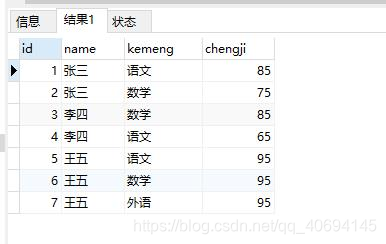
结果:
select name,chengji from t_table group by name having min(chengji) > 80
2.按年月分别展示数据
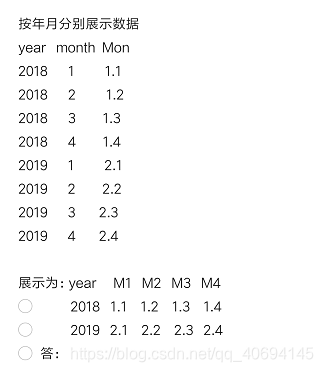
select year,
sum(case when month = 1 then mon else 0 end) as m1,
sum(case when month = 2 then mon else 0 end) as m2,
sum(case when month = 3 then mon else 0 end) as m3,
sum(case when month = 4 then mon else 0 end) as m4
from t_table group by year
3.删除表中重复的数据,并且保留一条
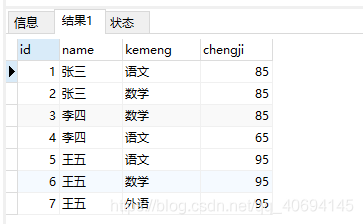
delete from t_table where name in (
select name from t_table group by name having count(name)>1
) and id not in(
select id from t_table group by name having count(name)>1
)
SELECT * from user_coupon where coupon_id = '1a0ea49011e5432ca53d51cc1eb1ea4c'
AND user_id in (
select user_id from user_coupon WHERE coupon_id = '1a0ea49011e5432ca53d51cc1eb1ea4c' group by user_id having count(user_id)>1
) and user_coupon_id not in(
select MIN(user_coupon_id) from user_coupon WHERE coupon_id = '1a0ea49011e5432ca53d51cc1eb1ea4c' group by user_id having count(user_id)>1
);
4.对一个班的同学分组,并且对每个班的学生进行排序
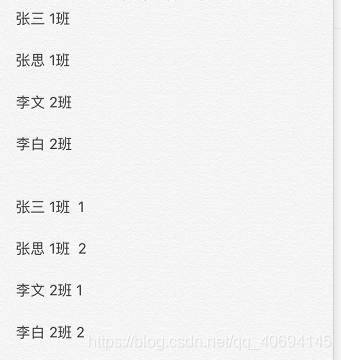
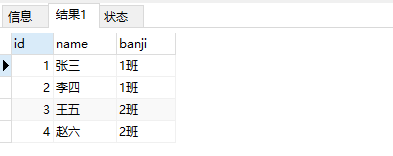
SELECT (@i := CASE WHEN @pre_times=banji then @i + 1 ELSE 1 END )rownum,b.*,@pre_times:=banji as newBanji from
(SELECT id,name,banji FROM t_banjiName GROUP BY banji,name ) b,
(SELECT @i := 0,@pre_times :='')as a

在mysql 8.x中可以使用下面这段代码实现上面的功能
SELECT *,row_number() over(partition by c_id order by id ) num FROM test;
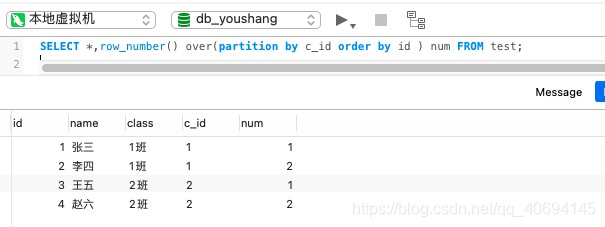
5. 根据提供的四张表查询数据
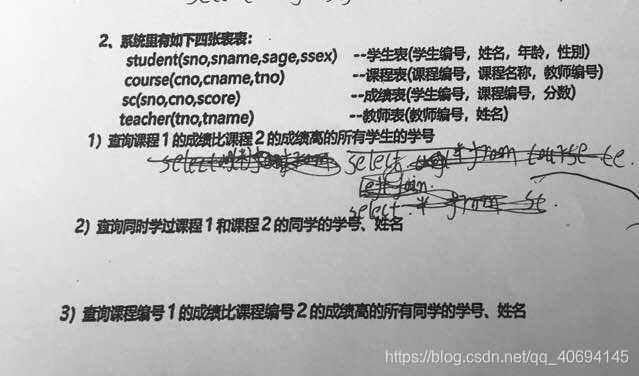
解答:
1.
select s.sno from sc as s inner join course as c on s.cno = c.cno
where c.cname = "课程1" and s.score > (select max(s.score) from sc as s
inner join course as c on s.cno = c.cno and c.cname = "课程2"
)
2.
select * from student as st inner join sc as s on st.sno = s.sno
inner jion course as c on s.cno = c.cno and c.cname = "课程1" or c.cname = "课程2"
group by st.sno having count(st.sno) > 1
3.
我目前的立即和第一题的理解是一样的,有可能我没理解清楚,目前我是按照第一个SQL执行的
6.Mysql使用联合索引
联合索引的创建格式:ALTER table user add INDEX `sindex` (`aaa`,`bbb`,`ccc`)
#这条语句列出来只想说明 mysql没有那么笨,where里面的条件顺序在查询之前会被mysql自动优化
EXPLAIN select * from user where ccc=4628 and bbb=315 and aaa=70;
#a用到索引,b没有用,所以c是没有用到索引效果的
EXPLAIN select * from user where aaa=70 and ccc=4628;
#a用到了,b也用到了,c没有用到,这个地方b是范围值,也算断点,只不过自身用到了索引
EXPLAIN select * from user where aaa = 3 and bbb > 315 and ccc=4628;
EXPLAIN select * from user where bbb > 315 and aaa = 3 and ccc=4628;
#因为a索引没有使用,所以这里 bc都没有用上索引效果
EXPLAIN select * from user where bbb=3 and ccc=4;
#a索引失效了 b没有使用,c没有使用
EXPLAIN select * from user where aaa=44 and bbb<777 and ccc=9999;
#a用到了索引,b在结果排序中也用到了索引的效果,a下面任意一段的b是排好序的
EXPLAIN select * from user where aaa=3 order by bbb;
#a用到了索引,但是这个地方c没有发挥排序效果,因为中间断点了,使用 explain 可以看到 filesort
EXPLAIN select * from user where aaa=3 and bbb=222 order by ccc;
#b没有用到索引,排序中a也没有发挥索引效果
EXPLAIN select * from user where bbb=3 order by aaa;
#总结
1. 使用联合索引查询必须存在建立索引最左边的的那个字段,不然会导致直接索引失效
2. 使用联合索引查询时不会因为字段的顺序而导致索引失效
3. 使用联合索引查询时比较符也会使索引失效,失效顺序为 最左边的先失效会导致右边的全部都失效,然后以此类推
4. 使用联合索引查询数据并且排序时查询下面的查询最优
EXPLAIN select * from user where aaa=3 order by bbb;
EXPLAIN select * from user where aaa=3 and bbb=222 order by ccc;





















 7870
7870

 被折叠的 条评论
为什么被折叠?
被折叠的 条评论
为什么被折叠?








